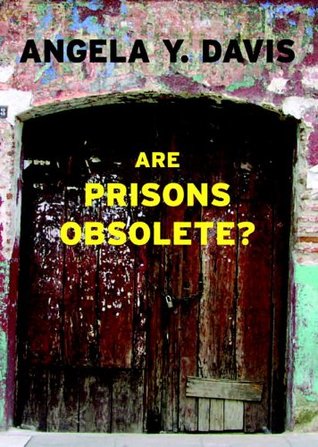More on this book
Community
Kindle Notes & Highlights
Read between
January 16 - January 21, 2024
more than two million people (out of a world total of nine million) now inhabit U.S. prisons, jails, youth facilities, and immigrant detention centers.
There are now thirty-three prisons, thirty-eight camps, sixteen community correctional facilities, and five tiny prisoner mother facilities in California.
The prison therefore functions ideologically as an abstract site into which undesirables are deposited, relieving us of the responsibility of thinking about the real issues afflicting those communities from which prisoners are drawn in such disproportionate numbers.
It has become so much a part of our lives that it requires a great feat of the imagination to envision life beyond the prison.
In the state of California, public colleges and universities are provided with furniture produced by prisoners, the vast majority of whom are Latino and black.
In the late nineteenth century, coal companies wished to keep their skilled prison laborers for as long as they could, leading to denials of “short time.” Today, a slightly different economic incentive can lead to similar consequences. CCA [Corrections Corporation of America] is paid per prisoner. If the supply dries up, or too many are released too early, their profits are affected . . . Longer prison terms mean greater profits, but the larger point is that the profit motive promotes the expansion of imprisonment.35
Since women were largely denied public status as rights-bearing individuals, they could not be easily punished by the deprivation of such
rights through imprisonment.
The persistence of domestic violence painfully attests to these historical modes of gendered punishment.
Today, there are approximately sixty super-maximum security federal and state prisons located in thirty-six states and many more supermax units in virtually every state in the country.
What was once regarded as progressive and even revolutionary represents today the marriage of technological superiority and political backwardness.
As the documentary powerfully demonstrates, the program produced dedicated men who left prison and offered their newly acquired knowledge and skills to their communities on the outside.
In 1994, consistent with the general pattern of creating more prisons and more repression within all prisons, Congress took up the question of withdrawing college funding for inmates.
However, since women were not acknowledged as securely in possession of these rights, they were not eligible to participate in this process of redemption.
At the same time, Zedner points out, this tendency to send women to prison for longer terms than men was accelerated by the eugenics movement, “which sought to have ‘genetically inferior’ women removed from social circulation for as many of their child-bearing years as possible.ʺ
It does not occur to her that a more productive version of feminism would also question the organization of state punishment for men as well and, in my opinion, would seriously consider the proposition that the institution as a whole—gendered as it is—calls for the kind of critique that might lead us to consider its abolition.
This is not only a consequence of deploying liberal—that is, formalistic—notions of equality, but of, more dangerous, allowing male prisons to function as the punishment norm.
Johnson and Johnson, Ortho Pharmaceutical, and Dow Chemical are only a few of the corporations that reaped great material benefits from these experiments.
In the context of an economy that was driven by an unprecedented pursuit of profit, no matter what the human cost, and the concomitant dismantling of the welfare state, poor people’s abilities to survive became increasingly constrained by the looming presence of the prison.
These facilities generate about eighty million dollars annually for Texas.
As a direct consequence of the campaign organized by prison activist groups in Melbourne, Victoria withdrew the contract from CCA in 2001.
Prisoners confined in such facilities spent an average of twenty-three hours a day in their cells, enduring extreme social isolation, enforced idleness, and extraordinarily limited recreational and educational opportunities.
We can hardly move in the direction of justice and equality in the twenty-first century if we are unwilling to recognize the enormous role played by this system in extending the power of racism and xenophobia.
A major challenge of this movement is to do the work that will create more humane, habitable environments for people in prison without bolstering the permanence of the prison system.
Rather, positing decarceration as our overarching strategy, we would try to envision a continuum of alternatives to imprisonment—demilitarization of schools, revitalization of education at all levels, a health system that provides free physical and mental care to all, and a justice system based on reparation and reconciliation rather than retribution and vengeance.
Alternatives that fail to address racism, male dominance, homophobia, class bias, and other structures of domination will not, in the final analysis, lead to decarceration and will not advance the goal of abolition.
proposals to decriminalize drug use should be linked to the development of a constellation of free, community-based programs accessible to all people who wish to tackle their drug problems.
Poor people deserve to have access to effective, voluntary drug treatment programs.
Radical criminologists have long pointed out that the category “lawbreakers” is far greater than the category of individuals who are deemed criminals since, many point out, almost all of us have broken the law at one time or another.
Thus, if we are willing to take seriously the consequences of a racist and class-biased justice system, we will reach the conclusion that enormous numbers of people are in prison simply because they are, for example, black, Chicano, Vietnamese, Native American or poor, regardless of their ethnic background. They are sent to prison, not so much because of the crimes they may have indeed committed, but largely because their communities have been criminalized.
The lawbreaker] is thus no longer an evil-minded man or woman, but simply a debtor, a liable person whose human duty is to take responsibility for his or her acts, and to assume the duty of repair.”132


